Can I Use an Ez Lube Hub on a No Easy Lube Axle
The best chain lube for your bike depends on the conditions you're riding in. Any friction or resistance within the chain can have an impact on how efficiently your power is used. In order to limit friction between the chain and the rest of the drivetrain and between the links of the chain as they rotate relative to one another as they pass over the chainring and sprocket and through the derailleur mechanism, a chain lube needs to be applied.
Choosing a bike lube is tricky as there are so many out there that all appear to offer the same qualities. To guide you, below we have rounded up some of our favourite wet and dry lubes. Have a look too at our test of the best bike cleaning kits and, at the bottom of this page, our buyer's guide to chain lube.
Best chain lube: Wet lube
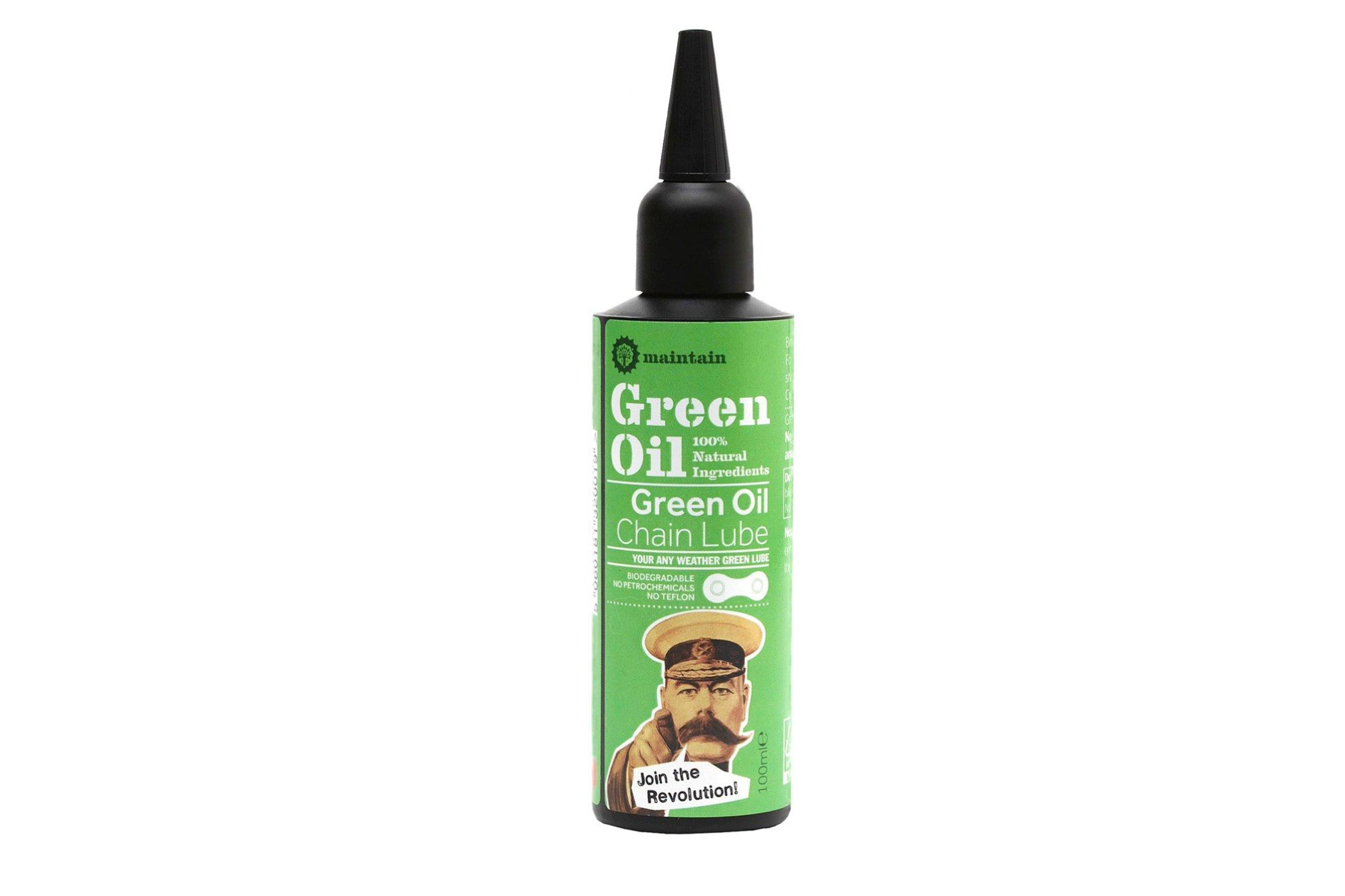
Green Oil's wet lube is fully biodegradable and is made from 100% natural ingredients. To increase durability and the length of time between applications, this wet lube contains N-Toc, a special refined plant extract that has similar properties to teflon. Green Oil claims it lasts over 200 kilometres on the chain per application, depending on the conditions.
On review we found that our chain remained rust-free after our 'garden hose test' that we used to replicate wet weather. A ride in rain followed and the chain again showed no signs of rust or stiff links. We also liked that, unlike some wet lubes, Green Oil didn't attract too much dirt and grime that can really wear the drivechain.
As for Green Oil's claims of over 200 miles or 124 miles between applications, we found that after 100 miles of riding our chain was still running smoothly.
You can read our full review of Green Oil Wet Lube here.
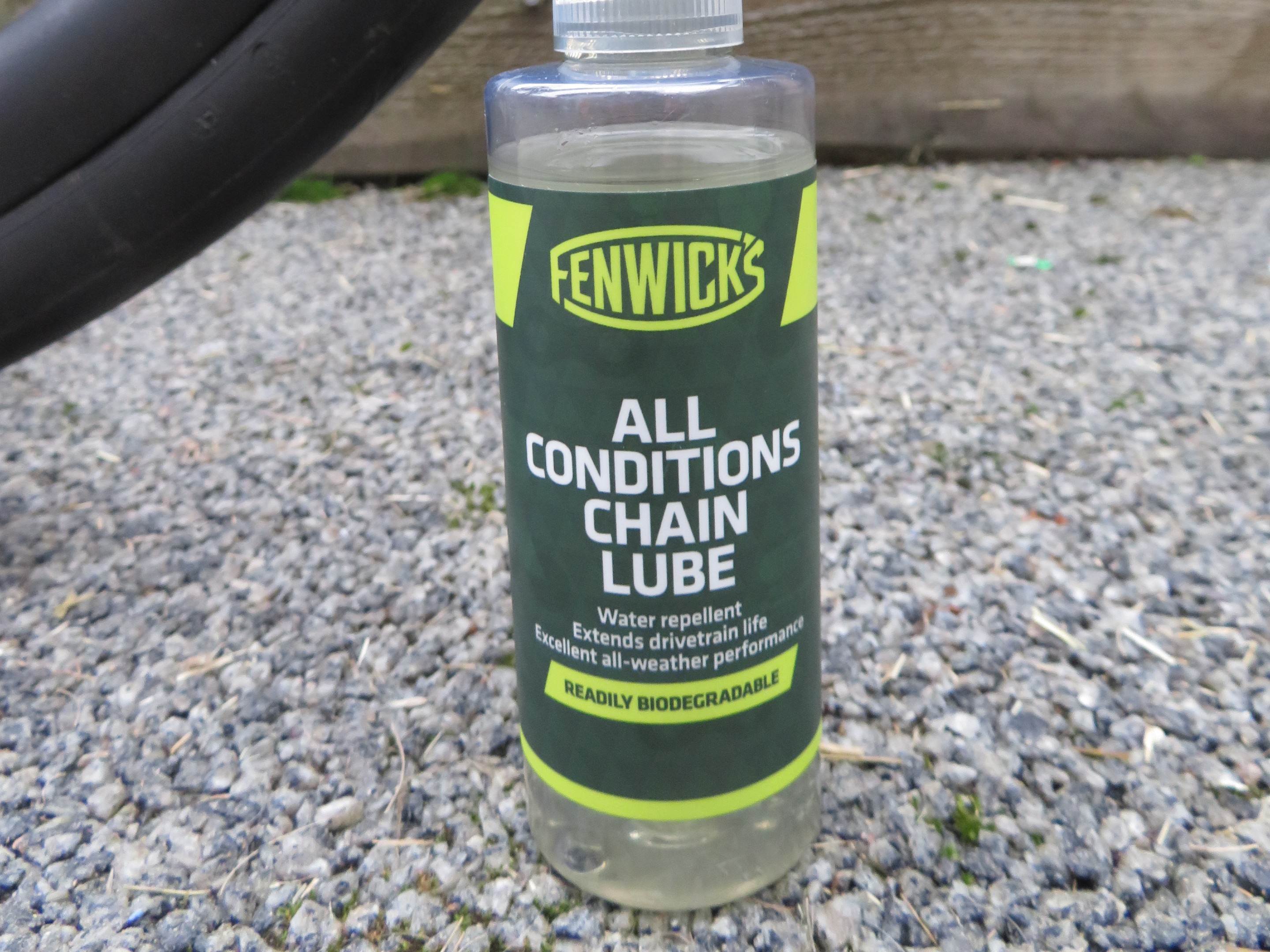
(Image credit: Future)
Fenwicks looks to marry the advantages of wet and dry lubes with its All Condition formulation. It's a bit lighter than many wet lubes, so it soaks into the chain quickly and doesn't become claggy or collect dirt, doesn't wash off in the rain, but is still easy to clean your chain.
It's also biodegradable and comes in a bottle made from recycled plastic, so its environmental credentials are first rate too.
We tested the lube in a range of weather conditions. We were impressed with how little dirt the lube picked up, even after a gravel ride. It also handled the rain well, during both the simulated 'garden hose' test and out in the real world, leaving our chain rust-free and running smoothly, even after 100 winter miles.
You can read our full review of Fenwicks All Condition lube here.
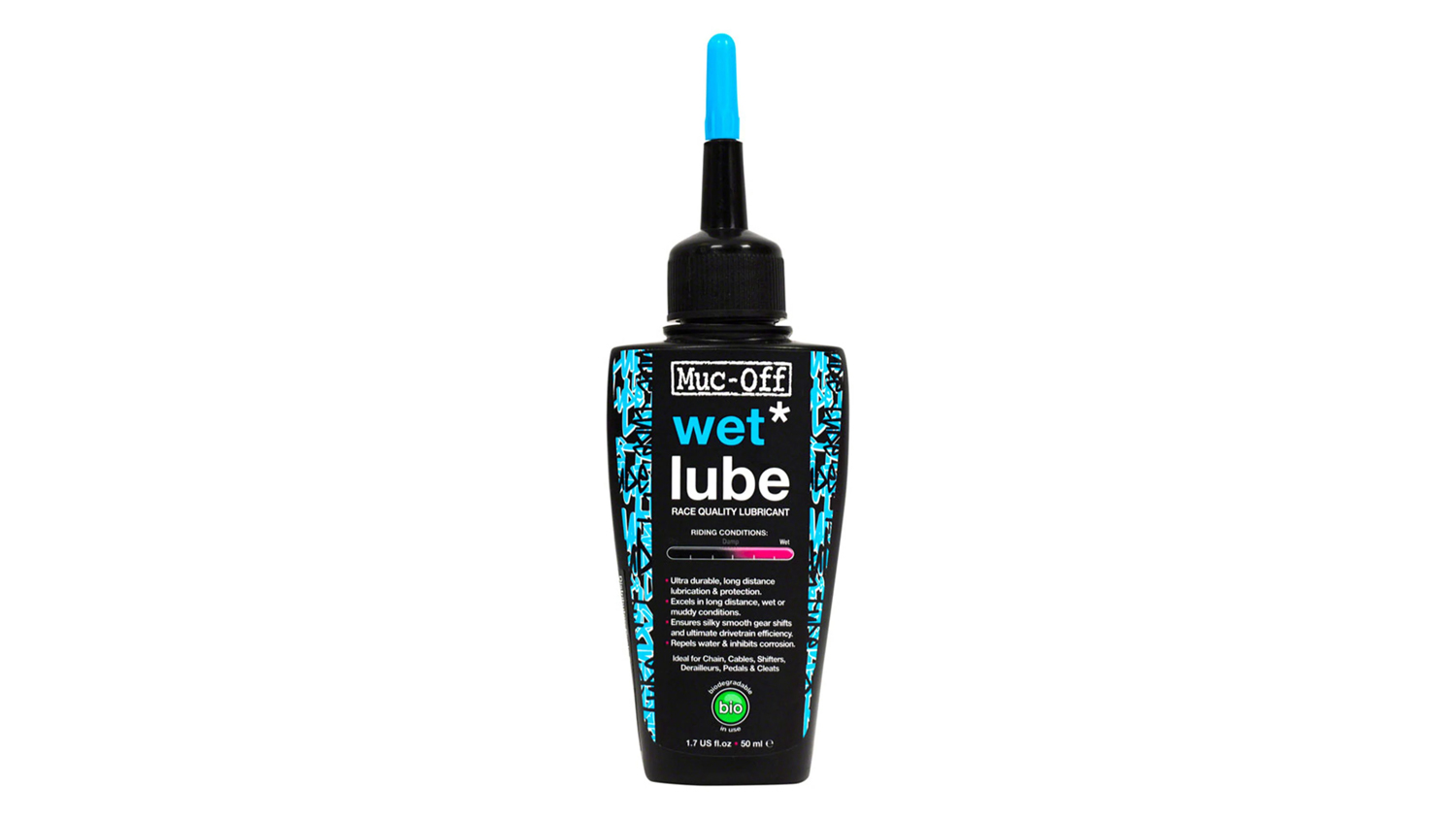
(Image credit: Muc-Off)
Muc-Off's wet lube formula contains no harmful acids, CFCs or solvents, as well as being biodegradable. It features the company's integral Extreme Pressure Additives coat for increased efficiency in the drive chain.
On test the lube kept our chain quiet and smooth, although it does attract a bit of dirt and grime.In wet conditions, both real and simulated, the chain remained rust-free. It's also long-lasting; we'd say that you should be able to ride 100 miles+ between applications.
You can read our full review of Muc-Off Wet Lube here.
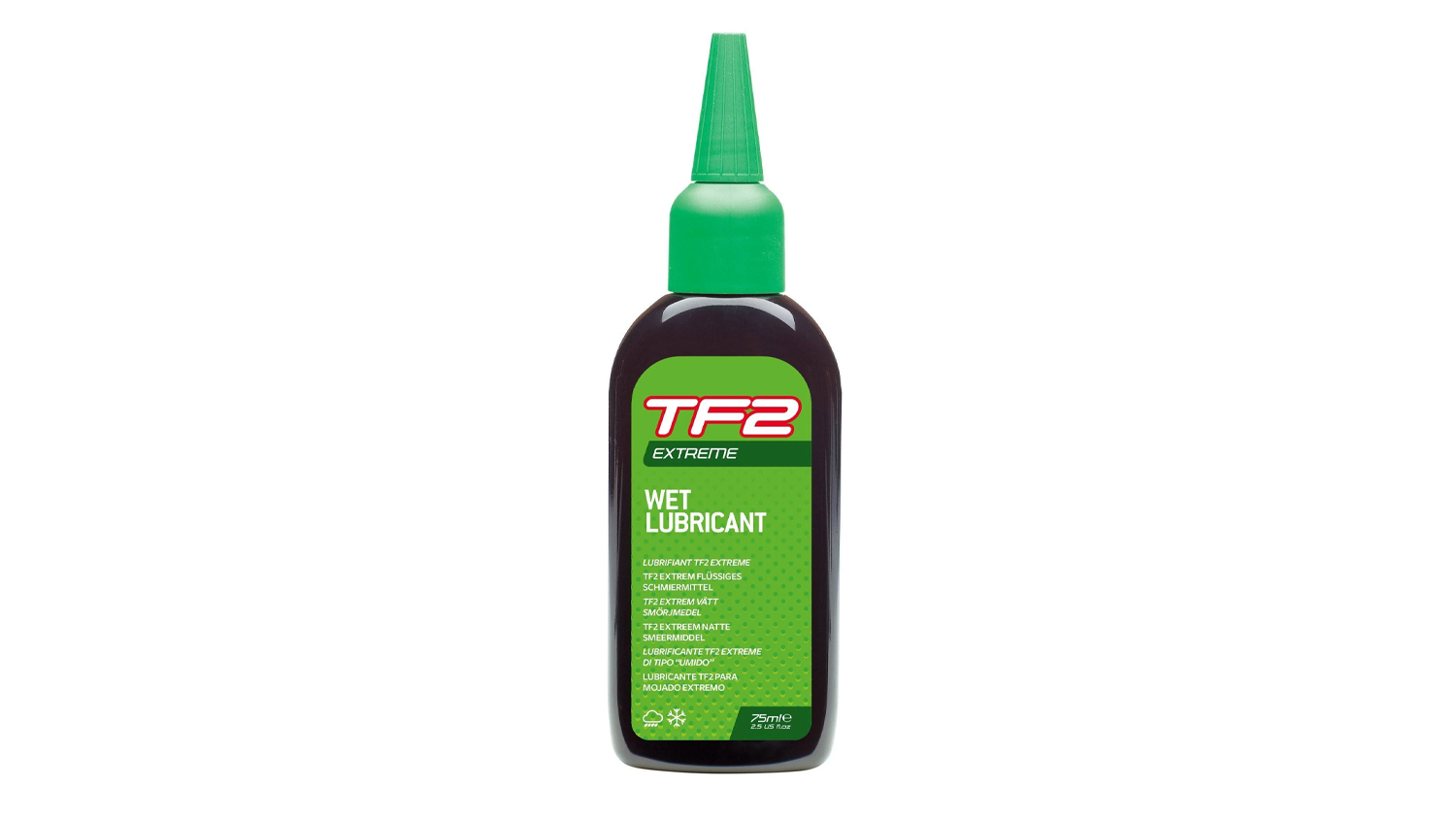
(Image credit: Weldtite)
The TF2 Extreme wet lube from Weldtite has water-resistant synthetic oils and special additives for reducing frictional losses.
Best chain lube: Dry lube

Finish Line's dry lube is very effective at repelling dirt, making it a good choice for dry and dusty riding. Teflon is used in this dry lube to reduce friction and mechanical wear as it penetrates into all the nooks and crannies for complete protection. The downside to Teflon is that it's harmful to the environment, even though its used here in very small doses.
In dry conditions the lube worked well. Our chain stayed very clean, with the Teflon seeming to work just as well as it does in frying pans. Finish Line says that the 60ml bottle should be good for around 100 miles. We'd say this seems pretty accurate, though if used in wet conditions it will last less than this.
You can read our full review of Finish Line Dry Lube here.
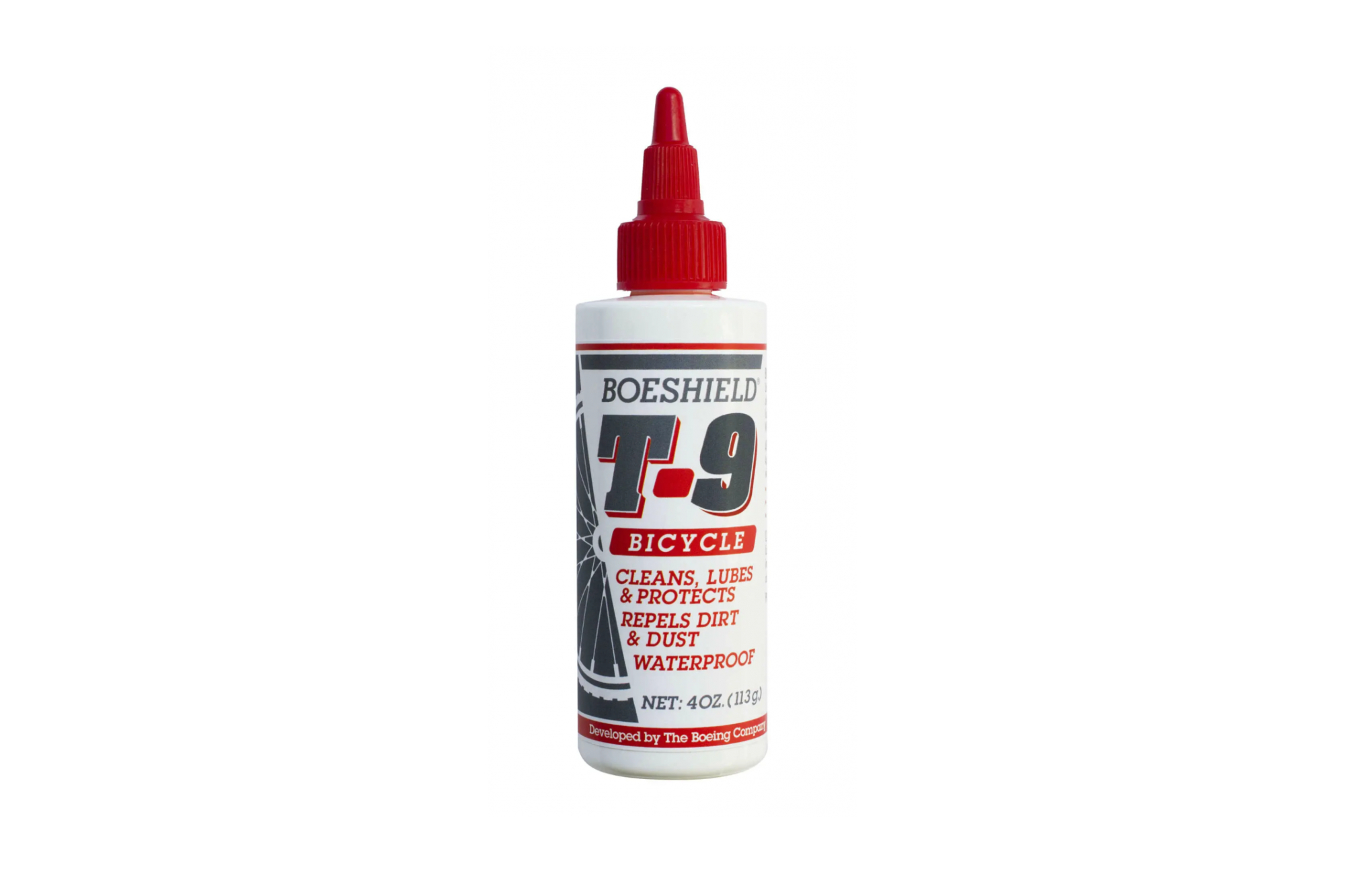
Developed and licensed by the Boeing company, this aviation-grade lube combines the best points of both wet and dry lube. It leaves a waxy film after application that resists the dirt, but it won't get washed off in the rain.

A clean chain is needed to use the wax-based White Lightning's Clean Ride lube. It is self-cleaning as small particles of the outer wax film will flake off and take any dirt that is on your chain with it. As a result of this, the Clean Ride lube must be reapplied more frequently after dirtier rides but this is worth it for the smooth running bike you will enjoy riding.
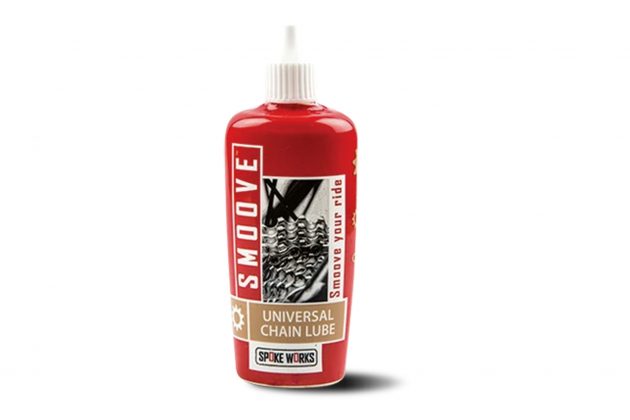
Developed to be used in the Absa Cape Epic MTB stage race that runs in South Africa, a race that is notoriously hard on drivetrain and suspension components, Smoove proved to be so long-lasting that it was dripped onto the chains of the majority of the top ten teams the year it was launched. It takes a little bit of chain prep before the first application, but when done correctly the wax based lube will last for an extraordinary number of miles.
During testing we found that the extra effort required in the application stage paid dividends when it was time to ride. After 150 miles in varied conditions, including some rain, the chain still ran smoothly and was noise-free. This means that despite Smoove Lube's higher price tag it still represents decent value for money due to the longevity of each application.
Read our full review of Smoove lube here.
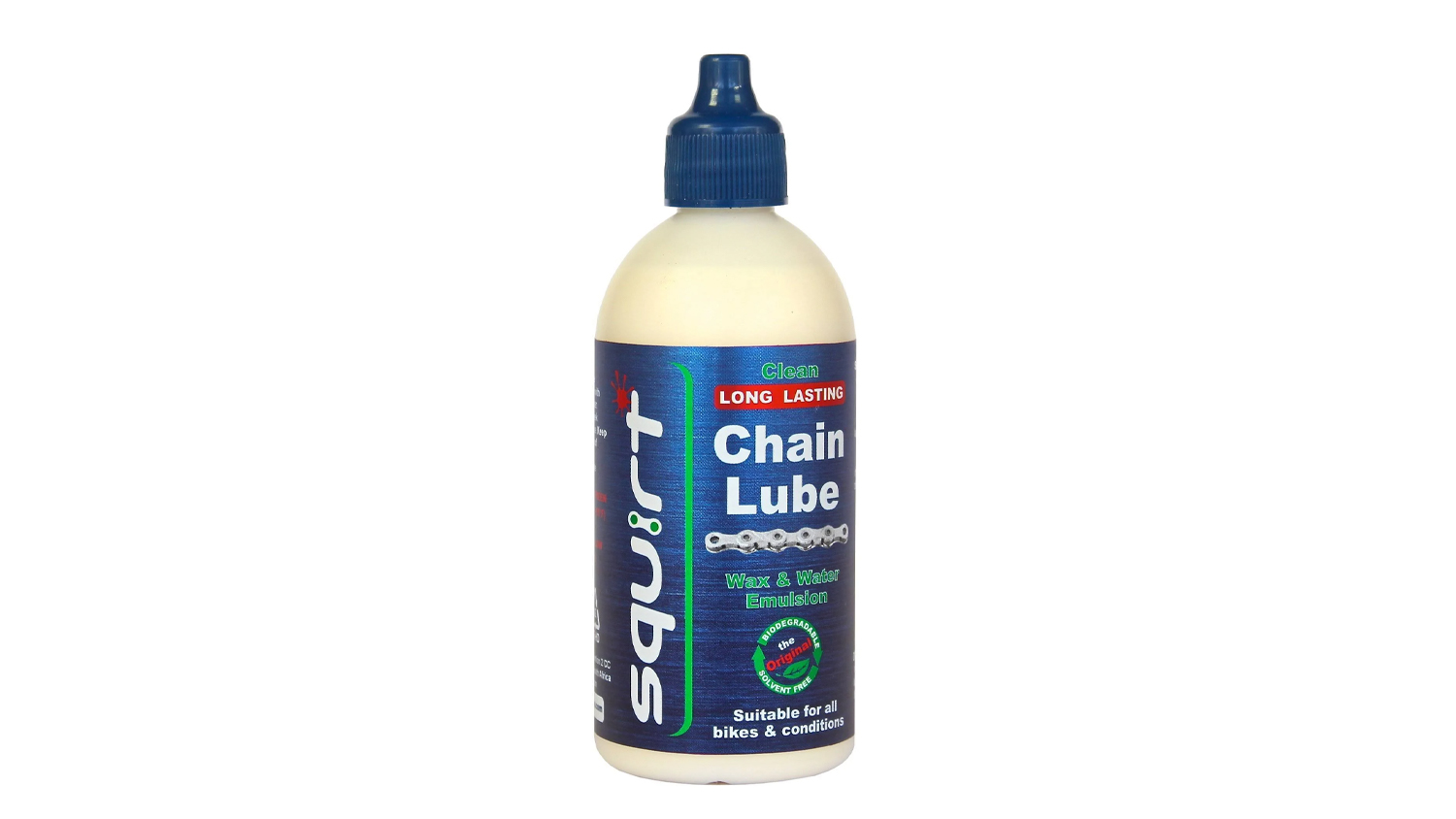
(Image credit: Squirt)
We found this wax-based lube lasts much longer than other lubricants when applied to a clean dry chain. It is easy to apply and stands up well on dusty and muddy summer gravel rides.
During testing we found that it kept our chain smooth and silent. It does wash off easily during wet winter conditions, but that's hard to avoid. It's water-based ingredients also mean that it won't prevent your chain plates from rusting . While this is could well compromise the life of your chain, in all probability your chain will have reached the end of its life before the plates rusted through. Vitally, our chain rollers stayed rust-free throughout testing.
You can read our full review of Squirt chain lube here.
Chain lube buyer's guide
Studies have shown that the type of lube itself makes little difference to the efficiency of a clean chain, although we've looked at whether swapping your chain lube can make you faster.
So if the type of lube is unimportant for efficiency why is there so much choice? Alex Trimnell, Muc-Off's CEO, has this advice: "Keeping your drivetrain clean and well-lubed is important for a smooth riding experience, but you need to make sure that you use the right lube for the conditions."
But a quick glance in your local bike shop will reveal a huge range of lubes to choose from. Wet, dry, wax, ceramic are just a few of the different types on offer. So which lube should you choose?
Despite the seemingly endless differences, chain lube can be broken down into just two simple categories: wet and dry.
Chain lube lowdown
Simon Nash of Green Oil, which makes environmentally friendly lubes, explains: "Wet lube was the original lubricant of choice. Early brands used something like car engine oil. Its consistency trumped basic spray lubricants that were primarily designed to displace water.
"It worked and was durable. But many cyclists on the road racing scene took to waxing chains in a frying pan. Secret formulas mixed in the kitchen often led to chains being dipped in bespoke waxy lubricants overnight.
"Companies soon realised that instead of heating up wax to melt onto a chain, wax could be melted (or rather dissolved) in a solvent. When this is applied the solvent evaporates, leaving just the wax, or 'dry' lubricant."
Going back to Trimnell's advice, choosing the best lube solution comes down to the conditions you ride in.
Wet lubes are used in all weather conditions but really come to the fore when riding in autumn and winter as they are water resistant so won't get washed off riding through puddles or in a rainstorm.
Most wet lubes will provide efficient lubrication for over 100 miles of riding with one application. If you ride in the winter months a wet lube will resist salt corrosion. Wet lubes are also really good at reducing drivetrain noise.
The downside is that the sticky nature of wet oil can attract dirt that, if left to build up, can work as a grinding paste to rapidly wear out components. It also oxidises and if left to build up ends up as thick black gunk. Using wet lube properly requires regular degreasing and cleaning of your drivetrain.
In dry, spring and summer conditions you want to use a lighter lubricant, normally a wax-based 'dry' lube. Dry lubes are much cleaner to use and attract less dirt build-up even with repeated applications. This makes them much better in dry or dusty conditions, especially off-road or on gravel.
However, even a light rain shower will wash dry lube off the chain and it is less durable; an 80-mile ride in dry conditions can see lubrication drastically reduced.
As Nash also points out: "Value is an issue — in a bottle of wet lube, 100 percent of the formula will lubricate. In a dry lube, some of the formula is solvent, which is there just to aid application."
Whichever lube you prefer to use, for the best results Trimnell suggests that you leave the lube on the chain overnight before riding for maximum benefit.
Now you know which to use, here's how to use it
What the experts think
My view: Andy Verrall former service course manager, One Pro Cycling
A wet lube from the team's supplier, Juice Lubes, is my default choice year-round. I prefer to have a lube on the drivetrain to cover all weather.
The most important thing for me is daily cleaning of the drivetrain with degreaser, thoroughly drying it to remove all moisture before reapplying more lube.
This way the drivetrain is far more efficient and you gain extra life out of the whole system, along with no loss of power from the rider.
My view: Simon Nash, Green Oil founder
Every bike cupboard should have both a wet and dry lube. Dry lubes are for the driest conditions and cleanest chains.
Wet lubes can be used all year, offer better value and have the greatest longevity. Whether wet or dry, it's often a question of how much time and effort you want to put in.
Either way, make sure you use a lubricant — your chain will thank you for it!
In summary
Regular, correct application of lube is an important process to ensure the smooth and efficient running of your bike.
The type of lube you choose to use comes down to several factors involving where and when you ride. If you are fastidious about cleaning your bike regularly, and often ride in inclement conditions, then wet lube is the right choice for you.
However, for the habitually lazy or fair-weather cyclist, a dry lube is going to be the preferred option.
How we test
All of our chain lubes are tested in the real world, with each reviewer clocking up a number of miles during the review period.
Additionally some of the lubes featured here were also tested in conditions designed to simulate riding in the rain. Here our reviewer applied the lube and then proceeded to soak the chain using a hose. He then left it for 30 minutes before riding.
Source: https://www.cyclingweekly.com/group-tests/best-chain-lube-wet-or-dry-289671

0 Response to "Can I Use an Ez Lube Hub on a No Easy Lube Axle"
Publicar un comentario